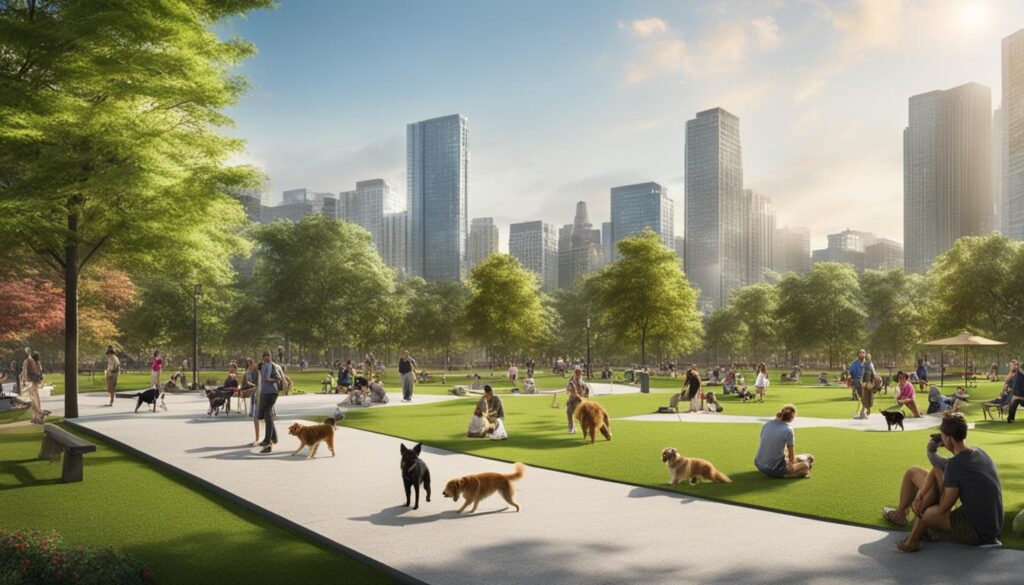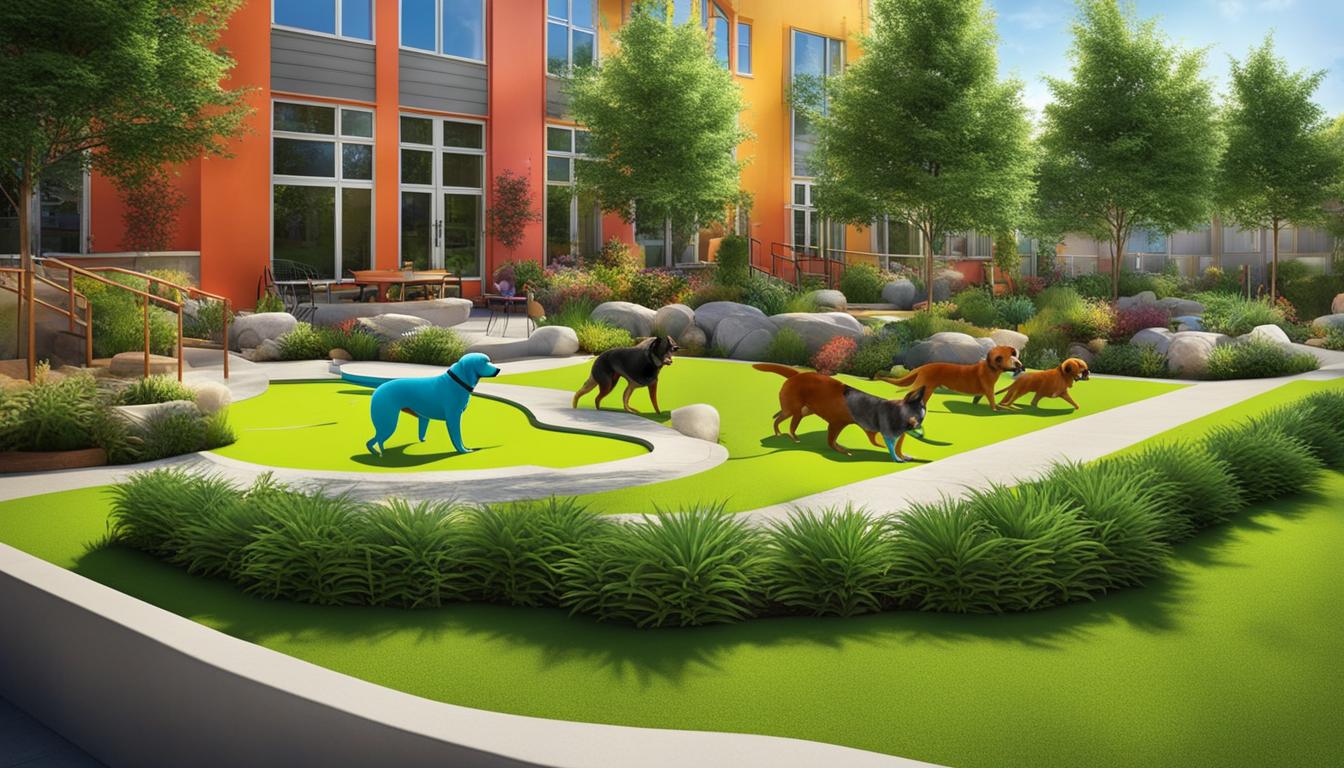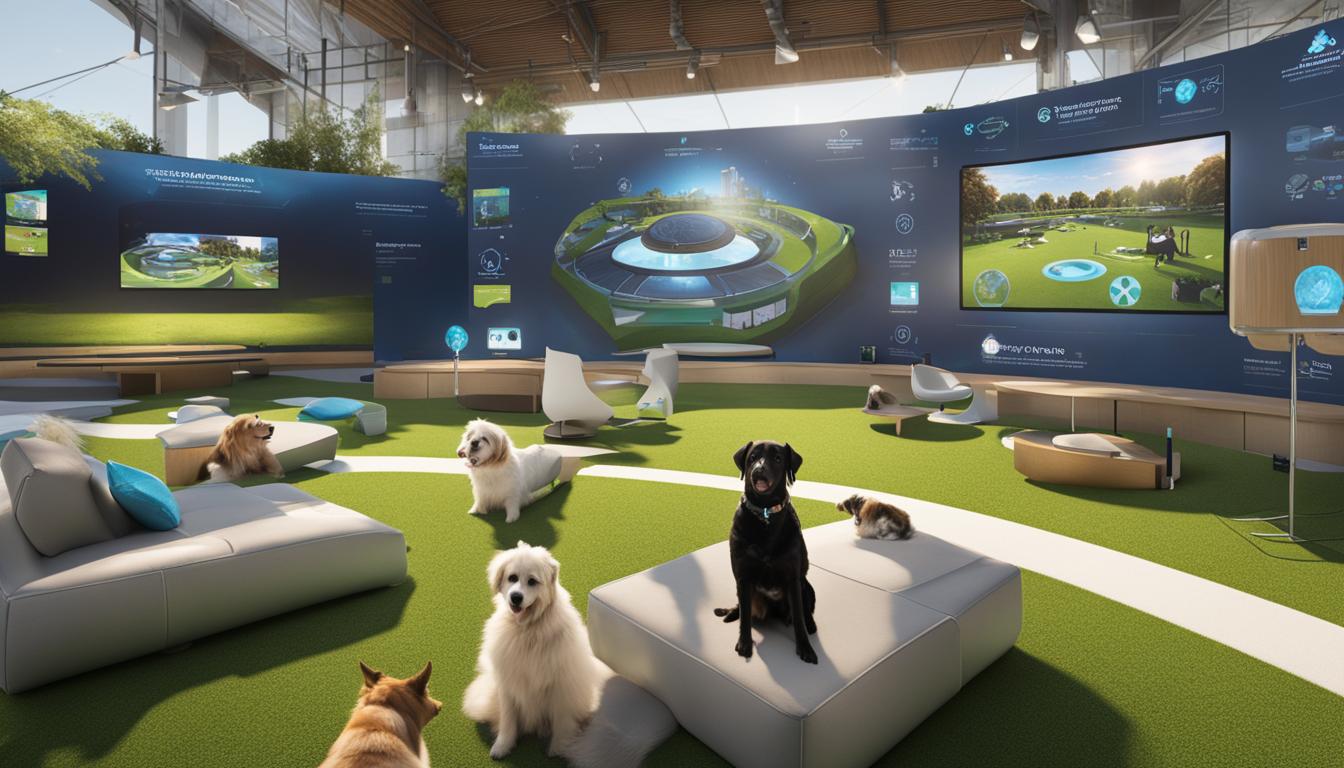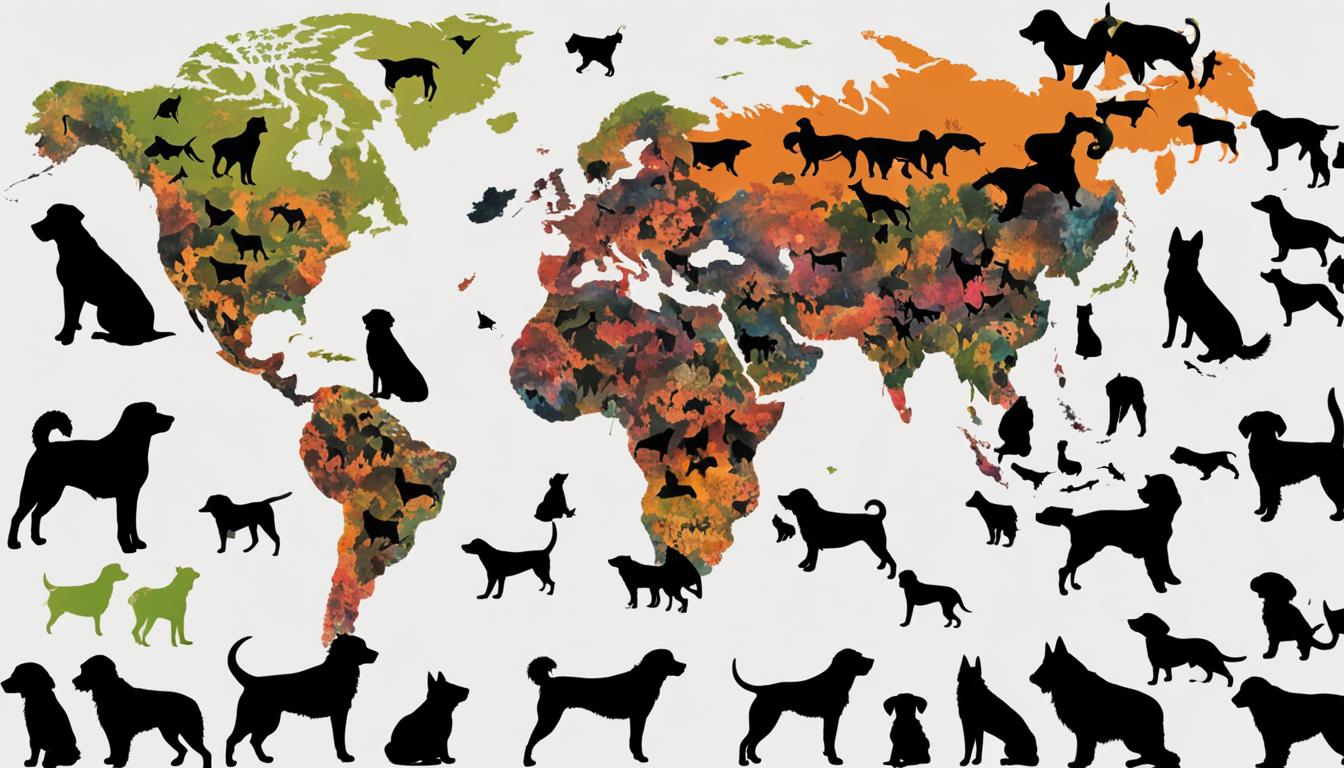Imagine strolling through a bustling city and stumbling upon a serene oasis, where wagging tails and happy barks fill the air. Welcome to the world of dog parks in urban areas. These vibrant and green spaces have become essential for our furry friends, offering them a chance to romp, socialize, and simply be dogs.
In the concrete jungle, urban parks play a crucial role in improving the environment and enhancing the quality of life for city dwellers [1]. However, the emergence of dog parks has taken this concept to another level, recognizing the unique needs and benefits of our four-legged companions in urban settings.
Key Takeaways:
- Dog parks provide dedicated spaces for canine recreation and socialization in cities.
- They have positive effects on dogs’ behavior, physical health, and overall happiness.
- Dog parks promote socialization among dogs and community-building among dog owners.
- Designing dog parks requires careful planning to meet the needs of dogs and their owners.
- Integrating sustainable elements in dog park design contributes to overall urban sustainability.
Benefits of Dog Parks in Urban Areas
Dog parks in urban areas offer numerous benefits for both dogs and their owners. These dedicated spaces provide a safe and controlled environment for off-leash play, allowing dogs to release energy and engage in physical exercise. Regular exercise in dog parks helps prevent obesity and related health issues in dogs, promoting their overall well-being and longevity.
In addition to physical exercise, dog parks also offer valuable socialization opportunities for dogs. Interacting with other dogs in a controlled setting helps dogs develop appropriate behaviors and reduces aggression and anxiety. The socialization aspect of dog parks contributes to better overall canine behavior and can help mitigate behavioral issues that may arise in urban environments.
Furthermore, dog parks are designed with the needs of both dogs and their owners in mind. These parks often include amenities specifically tailored for dogs, such as agility courses, water stations, and waste disposal stations. These amenities ensure a pleasant and convenient experience for dogs and their owners, fostering a positive bond between them. Dog parks also promote responsible pet ownership by providing a designated space for dogs to play and interact, reducing the likelihood of dogs being off-leash in non-designated areas.

Dog-Friendly Park Amenities
| Amenity | Description |
|---|---|
| Agility Courses | Designed for dogs to engage in physical exercise and mental stimulation. |
| Water Stations | Provides access to fresh drinking water, ensuring dogs stay hydrated during playtime. |
| Waste Disposal Stations | Equipped with bags and receptacles for convenient and responsible waste disposal. |
| Shade & Seating Areas | Allows dog owners to relax and supervise their pets comfortably. |
By incorporating these amenities, dog parks enhance the overall experience for dogs and their owners, making them an essential component of urban areas. The provision of dog parks reflects the recognition of the importance of canine recreation and socialization in cities. It also contributes to the development of harmonious communities where dog owners can connect and build relationships with fellow dog enthusiasts.
Designing Dog Parks in Urban Areas
When it comes to designing dog parks in urban areas, careful planning is crucial to ensure these spaces meet the needs of both dogs and their owners. The layout of a dog park should include separate enclosures for small and large dogs, creating a safe and compatible environment for all furry friends. Safety is a top priority, so secure fencing is essential to prevent any accidental escapes.
Providing shade and seating areas for dog owners is equally important. After all, human comfort matters too! A well-designed dog park should also include water sources, such as drinking fountains or even splash pads, keeping our four-legged companions hydrated and cool during playtime.
Now, let’s talk surfaces. Using durable and easy-to-maintain materials like pet-friendly artificial turf ensures a clean and hygienic environment for all. Plus, it can enhance the overall user experience, making those zoomies even more enjoyable for your furry friends.
But why stop there? Let’s make our urban dog parks eco-friendly as well. Integrating native vegetation and rainwater harvesting systems not only adds to the sustainability of the park but also creates a greener and more vibrant space for everyone to enjoy. And don’t forget to involve the community in the planning and design process! Collaboration with local dog owners ensures that the dog park reflects the needs and preferences of the dogs and their human companions.





